Experiencing a dip in a chlorinated pool can be a pleasant and invigorating way to beat the heat. However, it doesn’t quite measure up to the experience of swimming in a natural aquatic environment. Take a dip in any of our natural pools, and you’ll avoid the uncomfortable aftermath of itchy, red eyes, parched skin, and the desire for a cleansing shower that often follows a chlorinated water swim.
What are Natural Pools?
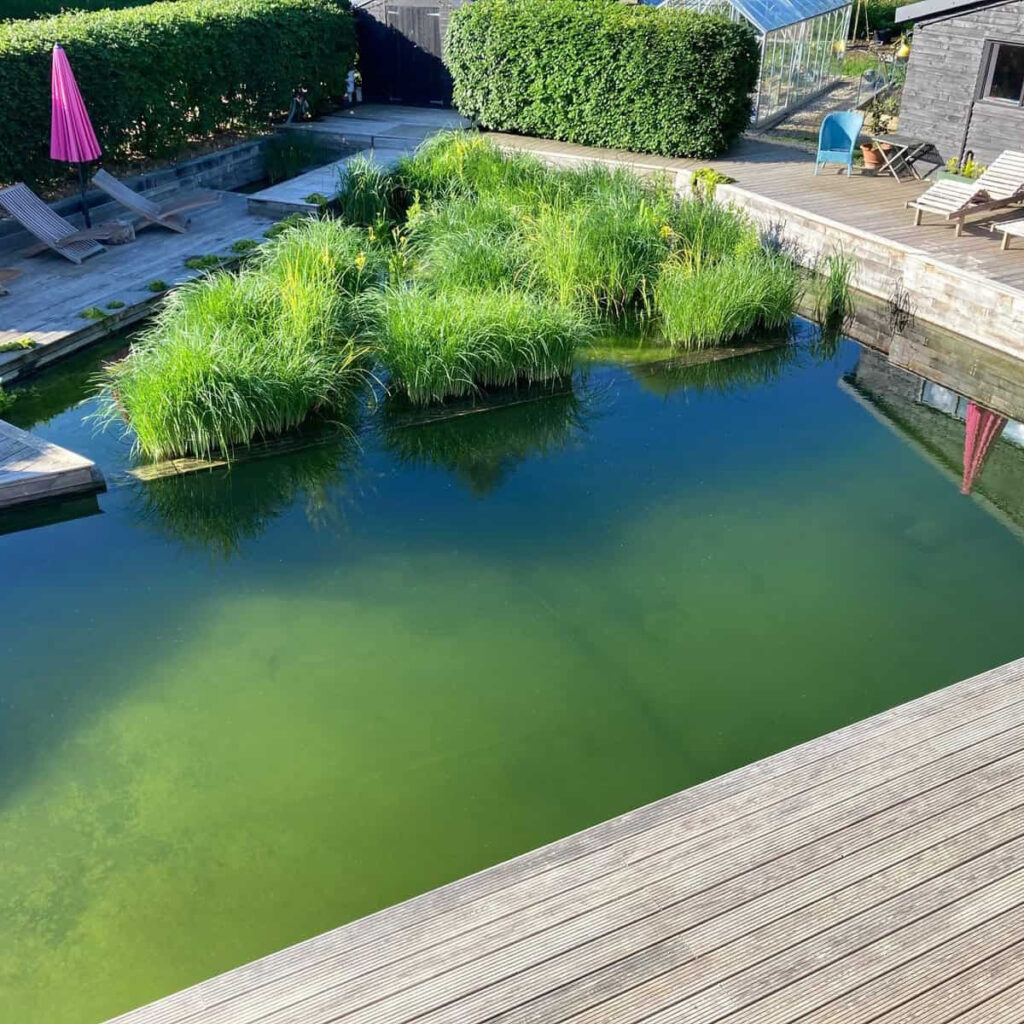
Natural pools combine refreshment, visual appeal, wildlife support, and seamless integration with the surrounding landscape.
Natural Pools offer a remarkable experience, with glimmering dragonflies gracefully perched on the reeds, and water lilies gently adorning the surface. They mirror the aesthetics of traditional ponds while providing a unique advantage – the ability to enjoy a dip without the inconvenience of muddy toes. In addition to their inherent beauty, these ponds also foster a harmonious environment for various wildlife species.
How Natural are They?
They are entirely natural. They eliminate the use of chlorine or any chemicals, relying instead on a mechanical pump to circulate water, a biological filtration zone where aquatic plants clean the water of natural pools, and a skimmer to maintain surface cleanliness.
Natural pools or swimming ponds are a type of swimming facility that undergoes filtration and purification through the use of water plants and a biological filtration system. This innovative approach allows for the maintenance of clear and hygienic water without relying on chemical treatments.
The end result is a harmonious and visually appealing pool, resembling the untouched beauty of swimming in a pristine mountain lake. The water possesses a gentle and vibrant quality, providing a rejuvenating and tranquil experience for swimmers.
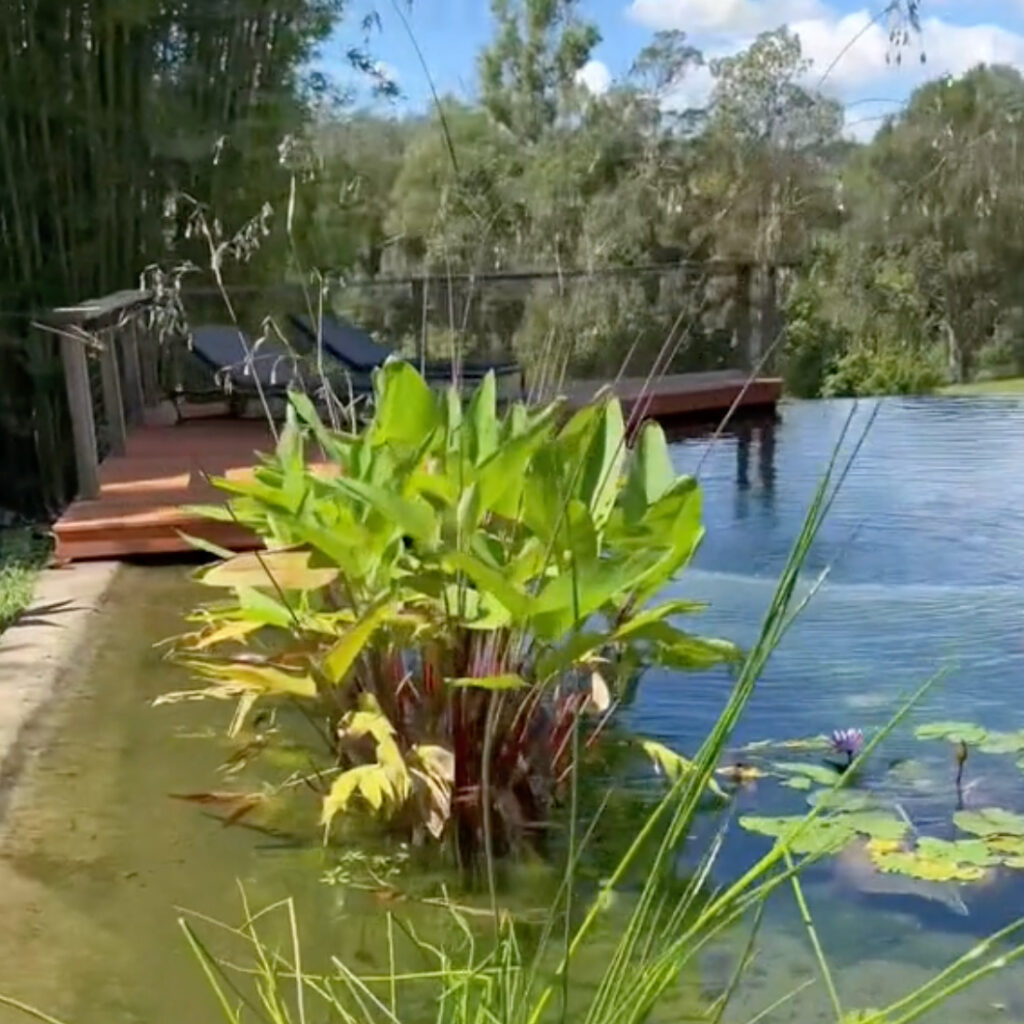
Native aquatic plants flourish within the allocated regeneration zones of the natural pool, playing a vital role in assimilating nutrients from the water. This innate process contributes to sustaining a harmonious ecosystem and effectively regulates the proliferation of algae.
The functionality of natural pools relies on the utilisation of both specialised reed bed technology and a filtration system. The reed bed technology serves as a natural water filtration mechanism within the pool, while the filtration system facilitates the circulation of oxygen molecules throughout the pool floor.
Building Your Own Natural Pools
Buildng your own swimming pool requires careful planning and effort. Prior to undertaking this project, it is advisable to conduct thorough research
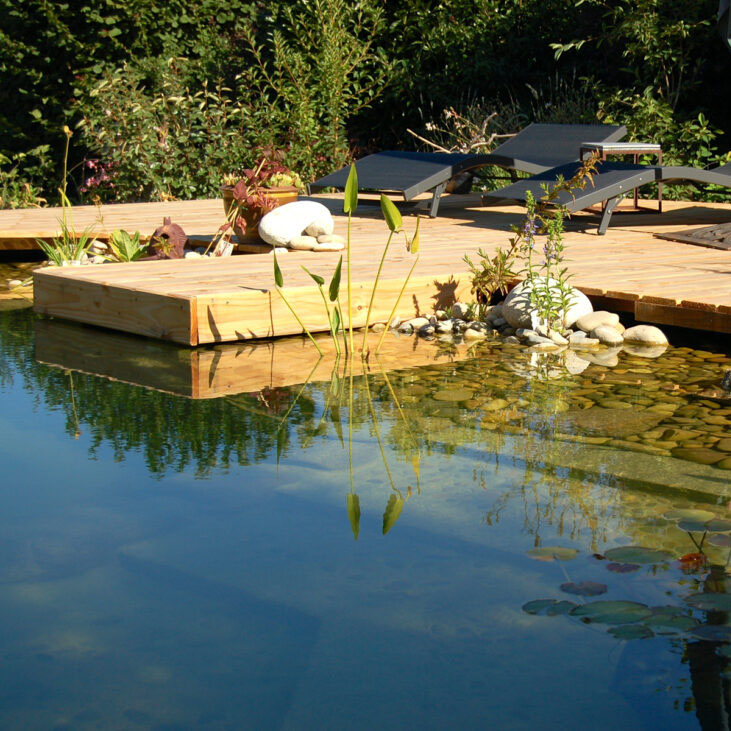
In order to maintain the cleanliness of natural pools without relying on chemical treatments, it is imperative to prevent the water from becoming stagnant. This can be achieved through effective filtration and aeration. Stagnant water poses various issues, such as attracting mosquitos, facilitating the growth of bacteria.
There are several filtration system options available, including a waterfall system or a pool-bottom system. If you opt for the pool-bottom system, it is advisable to install it in the deepest section of the pool to ensure swimmers can navigate around it comfortably. It is highly recommended to seek the assistance of a professional when handling any electrical components, especially those that will be in close proximity to water.
Maintaining Natural Pools
Natural Pools require less maintenance than you may think. Like their chlorinated counterparts, natural pools usually have filters that will need to be cleaned regularly. Unlike chlorinated pools, though, there’s no need to add chlorine, and you won’t have to vacuum since the natural elements in the pool are supposed to be there
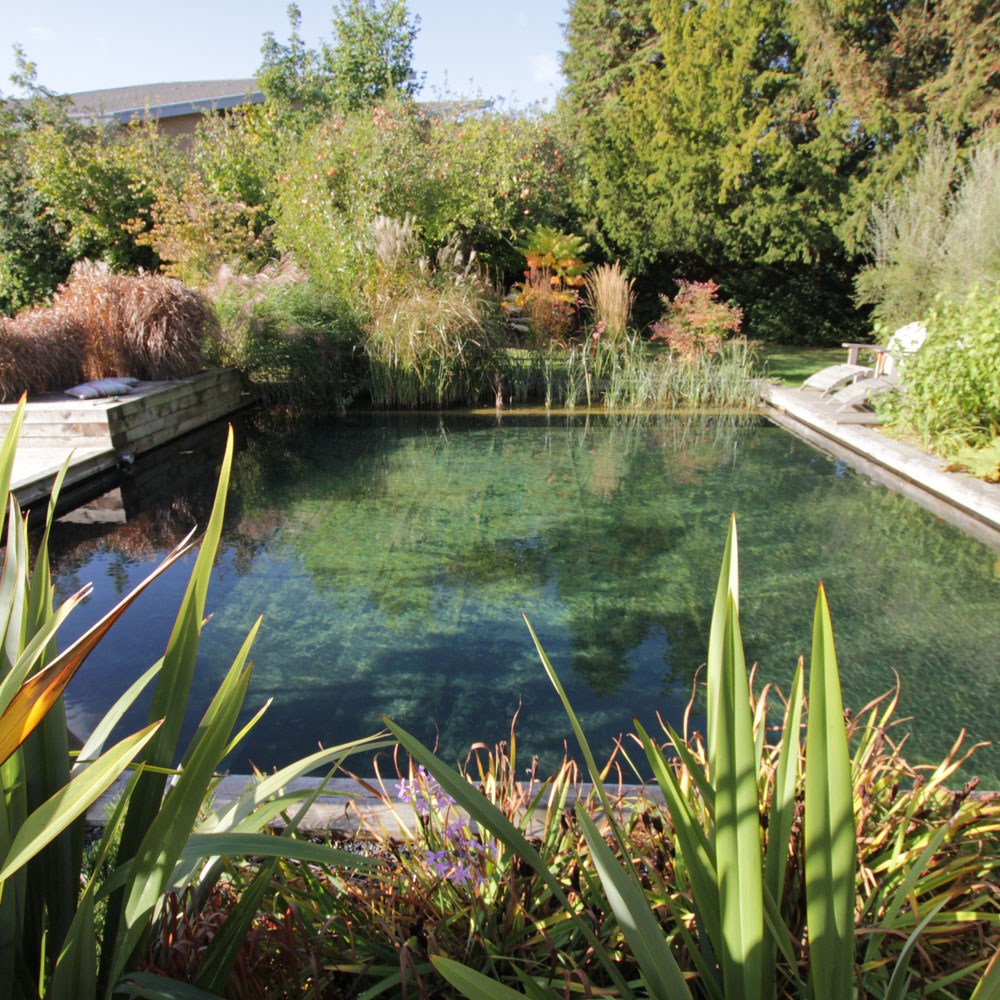
Although the level of maintenance is less than that of a conventional chlorinated pool, natural pools still require some maintenance.
Conventional swimming pools necessitate a comprehensive set of tasks to maintain the proper pH balance, add chlorine, and perform other meticulous adjustments to keep them clean. In contrast, natural pools are predominantly self-sufficient and demand minimal upkeep, mainly consisting of occasional plant trimming and replacement, as well as skimming away debris. Remarkably, these pools can even be left undisturbed, allowing them to naturally freeze over during winter, resembling the characteristics of a genuine pond.
But What About The Plants?
The selection of plants for your natural swimming pool serves multiple purposes. Below the water’s surface, these plants contribute to the living ecosystem of your pool, working towards the organic purification of water and eliminating the need for harmful chemicals. Above the water’s surface, it is essential to opt for a diverse range of backyard pond plants that enhance the visual appeal of your natural pool.
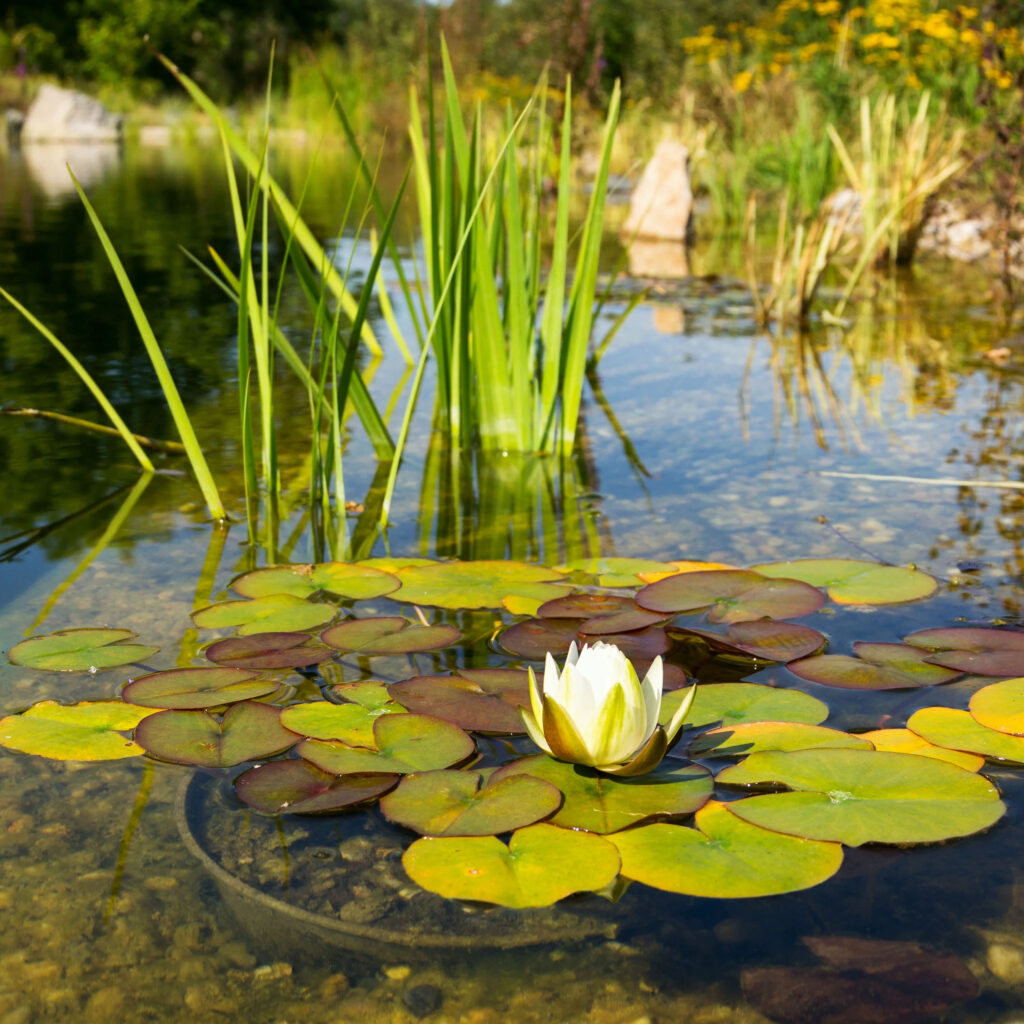
Natural swimming pools employ the use of plants or a combination of plants and sand filters to maintain pristine and chemical-free water clarity.
The key to creating a successful natural pond or pool is the planting with a range of aquatic filtration plants. These should include oxgenators, waterlilies, shallow and deep marginals and waterside bog garden species. A great example is the natural pool of Sophie Kovic.
This can involve a combination of reeds, rushes, water lilies, or lotus plants positioned above the water. The integration of both beauty and functionality is crucial during the process of choosing plants for your natural swimming pool..